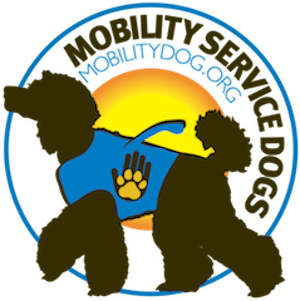Service Dogs: Why Are They a Valuable Tool for People with Disabilities?
3 Poodle Service Dogs Laying Down on Green Grass
What is a Service Dog?
The legal definition issued by the ADA in 1990, views service animals as “dogs that are individually trained to do work or perform tasks for a person with a disability.” (Since March 15th of 2011, only dogs are legally recognized as “service animals.”)
Americans With Disabilities Enacted in 1990
The ADA goes on to define “disabilities” as being:
Physical.
Sensory.
Psychiatric.
Intellectual.
Or another mental challenge.
These disabilities are covered and protected by the ADA legislation. Therefore, a trained Service Dog assists their disabled handler with specific tasks in order to independently function with their ADLs or Activities of Daily Living.
A Service Dog: A Necessary “Medical Device”
US Department of Housing and Urban Development Logo
In an attempt to further refine the role of the Service Dog, the Department of Housing and Urban Development (HUD), officially declared service animals in the same class as “medical devices.” The Fair Housing Act of 1968 was extended to include Service Dogs as “necessary medical devices for disabled persons.”
As with any other “medical device,” (a wheelchair, motorized wheelchair, cane or oxygen tank), disabled people cannot be discriminated against when it comes to housing or equal access to public places regardless of a “No Pet” policy. Under the Fair Housing Act, landlords must make “reasonable accommodations” for those who are disabled with an assistance animal.
But how do these incredible, highly-trained canines act as valuable tools for people with different disabilities? Keep reading for examples below.
Service Dogs: Valuable Tools for People with Disabilities
Black Puppy Training as a Service Dog
In what ways do Service Dogs act as valuable tools for their disabled handlers? The original service dog was a Seeing Eye Dog who was responsible for guiding their blind handler through their life safely.
Since then, a variety of Service Dogs have been trained in a plethora of invaluable tasks and daily support!
For instance:
A deaf person may be supported by a Hearing or Signal Dog to alert their person to critical sounds like the fire alarm, phone, doorbell or a crying baby.
A Medical Alert Dog will monitor and alert their handler of a certain medical condition including:
An imminent seizure.
Pending heart attack or stroke.
Life-threatening allergens in the environment or food.
Potential complications with diabetes.
The Service Dog can also physically protect their handler in the event of a seizure or convulsion.
Service Dog Pushing Elevator Buttons
Those with mobility issues will benefit from a trained Mobility or Brace Support Dog offering mobility, stability or balance support, retrieving items, helping pull their wheelchairs, opening doors or pushing buttons. These are the Service Dogs MobilityDog is committed to making available to the disabled community.
People with psychiatric disabilities rely upon a Psychiatric Assistance Dog to recognize and alert to panic or anxiety attacks and autistic behaviors, address PTSD (Post Traumatic Stress Disorder) and help reduce stress and blood pressure throughout the day.
With the ADA Act and the legal stance of HUD, huge steps have been made for disabled communities. But a lot of work still remains to ensure this civil rights legislation continues to evolve and proactively support each disabled community throughout the country.
Man in a Wheelchair Giving a White Poodle Service Dog a Treat During Training
Help Support Our Work for the Disabled Community with Your Donation!
Click on the blue box below to make a tax-deductible donation to MobilityDog!







